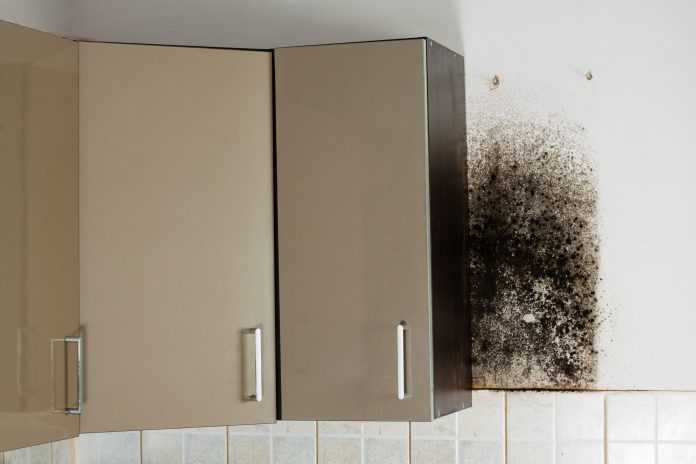In November, a coroner said the tragic death of 2-year-old Awaab Ishak from prolonged exposure to harmful mould in his home should be a “defining moment” for the housing sector in increasing the understanding and awareness of damp and mould. Steve Hodgson, chief executive of the Property Care Association, makes the case for a more responsive, science-based approach
In the latter part of 2022, the tragic story of Awaab Ishak featured across the national media after an inquest cited mould as the primary catalyst for the toddler’s avoidable death. Since then, we’ve seen further stories in the press about the actions the government proposes to address the issue of mould in rented properties.
Similar to everyone who routinely assists those with dampness in social and private rental accommodation, the PCA understand that the photographs released after the inquest are not unusual. The conditions that the Ishak family were living in are not uncommon.
The growing issue of damp and mould in UK housing
PCA members have seen a significant increase in calls to homes affected by dampness this winter, with problems becoming more severe and affecting larger areas.
Dampness and mould can have implications for the health and wellbeing of those who live in these conditions. Trying to reside in a home affected by excessive moisture can exacerbate respiratory illness, affect mental health, dimmish comfort and increase the cost of heating.
Several factors are contributing to the rising trend, predominately linked to modern living and the cost of fuel.
High occupancy rates, as well as efforts to reduce draughts and the amount of fuel and heat used in homes, are compounded by the effects of climate change and poor insulation, all of which contribute to condensation and mould problems.
Furthermore, a lack of investment in planned maintenance, coupled with changes to rainfall patterns and some extremely hot summers can contribute to problems with rainwater ingress.
We believe the frequency of problems associated with damp and mould from indoor air is only set to get worse, with unseen and as yet underestimated problems being created due to these new pressures on properties.
Effective ventilation can prevent damp and mould
The key to addressing mould issues can be the installation of appropriate and efficient ventilation. In many situations, this is the most appropriate way to resolve atmospheric moisture and air pollution problems where tenants face the challenge of mould and condensation.
There’s a need for a focused approach to ventilation and air quality across the UK. This would have benefits for the health and wellbeing of many, while reducing energy bills and improving the life of decoration and building fabrics. Simple strategies would make considerable in-roads in tackling the growing blight of mould and condensation for millions.
However, despite the impact that good ventilation can have on a property’s moisture levels, the current regulation and guidance setting out minimum requirements in homes are mixed and usually ignored or misunderstood.
We are concerned about the impact and interpretation of Approved Document F, the Building Regulation that sets the minimum standard for ventilation in homes. Though recent changes now set a required standard of air exchange for existing buildings, as well as new ones, it does not get the attention it deserves.
Unfortunately, the standard is rarely applied where buildings are being renovated or improved, and its exacting requirements are all too often simply ignored.
A shift in approach to Building Regulations
Over the years, we’ve pressed for more robust Building Regulations to draw in existing buildings and protect all homeowners – and we will continue to make the case where we consider that change is beneficial.
In the case of Approved Document F, our focus is not really on promoting a change in its scope but instead a pragmatic rather than a prescriptive approach to the question of “adequacy” coupled with more efforts to impose and police these mandatory requirements.
Our view is that using a rigid and prescribed rate of air extraction that is based on assumed rates of occupation and background airtightness can be counterproductive.
Instead, allowing specialists to design and install ventilation systems that are responsive to the needs of the occupation – considering the real airtightness and thermal performance of the building – can only produce better outcomes, save energy and deliver a healthy indoor atmosphere.
We would like to see more robust reporting structures, greater accountability for ventilation installers and consequences for landlords that fail to deliver buildings that are safe and dry. These aims can only come to pass if they are coupled with a culture of education and learning for all housing professionals.
There’s a need for empowered, technically competent professionals who can deal with dampness, condensation and mould issues. Decisions and interventions should be based on science and understanding, rather than assumptions and prejudgements.
Every housing officer, landlord, surveyor and building professional should have the knowledge to at least understand the causes and implications of dampness when it is seen or reported.
With more homes than ever being affected by mould, we need to do more and better – and make the so that the right outcomes are delivered quickly and efficiently, and that work is done right first time, every time.

Steve Hodgson
Chief executive
Property Care Association
Tel: +44 (0)1480 400 000

















